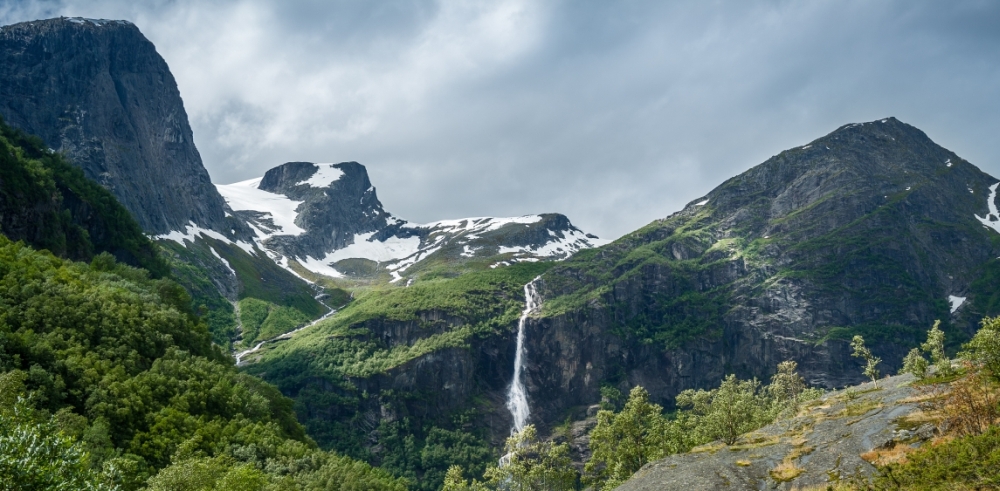EMERALD – Popular scientific presentation: Read in: English | Norwegian.
The EMERALD project focuses on the role of vegetation in the climate system. Plants have changed the history of our 'Emerald Planet', they “regulate the cycling of carbon dioxide and water, influence the rate at which rocks erode, adjust the chemical composition of the atmosphere, and affect how the landscape absorbs or reflects sunlight.”; from the book: The emerald planet, David Beerling, 2007.
Vegetation thus shape and is shaped by the atmosphere, soils, and the hydrological cycle.

In particular, we aim to improve the understanding of high latitude ecosystem processes and their representation in global climate models. Our focus is on boreal and arctic ecosystems, such as evergreen trees, deciduous trees, shrubs, mosses, and lichens. We will primarily work on the land module in the Norwegian Earth System Model (NorESM). Current climate models lack a good description of vegetation and land surface processes at high latitudes. We will advance the land module in NorESM, using data and knowledge from field-based ecosystem research. Our long-term goal is to improve the projections of climate change for our northern regions.
EMERALD will integrate, structure and develop a highly interdisciplinary field of research by linking research groups using field observations, experiments and modelling. We conduct fieldwork and field experiments at Finse in western Norway, Finnmark in northern Norway, and on the Arctic archipelago of Svalbard. Lab experiments will mainly be done in Oslo.
We will communicate our results to the public and to our stakeholders. This will be done for example through the Norwegian Centre for Climate Services and The Climate House, Natural History Museum, UiO.
Research objectives
EMERALD will improve the representation of high latitude ecosystems and their climate interactions in the NorESM model by integrating data and knowledge from empirical ecosystem research. We aim to become the leading terrestrial modelling group in Norway, by integrating and consolidating research on ecosystem–climate interactions and feedbacks. In line with the book “The Emerald Planet”, Beerling, 2007 lend EMERALD its name, we place vegetation in the centre.
We aim to advance the representation of high latitude terrestrial ecosystems, by offering new parameterisations and structural updates to improve current land surface schemes. This will yield significant improvements in NorESM, including terrestrial ecosystems impacts and feedbacks. As such, EMERALD serves the societal need for improved climate change projections.
Approach
EMERALD will integrate existing activities among key partners and provide added value through critical mass, joint field work and experiments, coordinated modelling efforts and novel approaches. We will review the existing parameterisations across a variety of scales. We will integrate and expand existing national or international research and observation systems. Doing so, EMERALD facilitates improves the use of data and observations, and ultimately the implementation of critical processes in NorESM.
To achieve the objectives, the project is organised into tightly interlinked work packages. There are four work packages (WP),for more information see own web page.
- Land surface model evaluation and improvement–WP1
- Improved process understanding from observations and experiments–WP2
- Implementation in NorESM and quantification of feedbacks–WP3
- Dissemination and communication–WP4
Financing
EMERALD represents a big leap ahead for Norwegian research on terrestrial ecosystems–climate interactions. The 30 MNOK funding releases 21 MNOK in-kind contributions, notably from LATICE, and another 38 MNOK (21 and 17 MNOK PhD/postdoc labour and field work, respectively) is available through synergy and efficient collaboration. These synergy projects are mainly from two ERC grants and ongoing RCN funded projects. In total, 89 MNOK will be utilised to study terrestrial ecosystems–climate interactions in Norway.
Funding from the Norwegian Research Council (NFR) in the KLIMAFORSK-programme, with the NFR project number 294948 (2019-2023).
The project period for the Emerald project is from 2019 until and including 2023.
Cooperation
The EMERALD project is carried out in cooperation with researchers from different institutions:
See list of participating researchers.
Our researchers have a big portfolio of affiliated projects that inform and support our efforts in EMERALD:
Overview of involved institutions and affiliated research projects.
